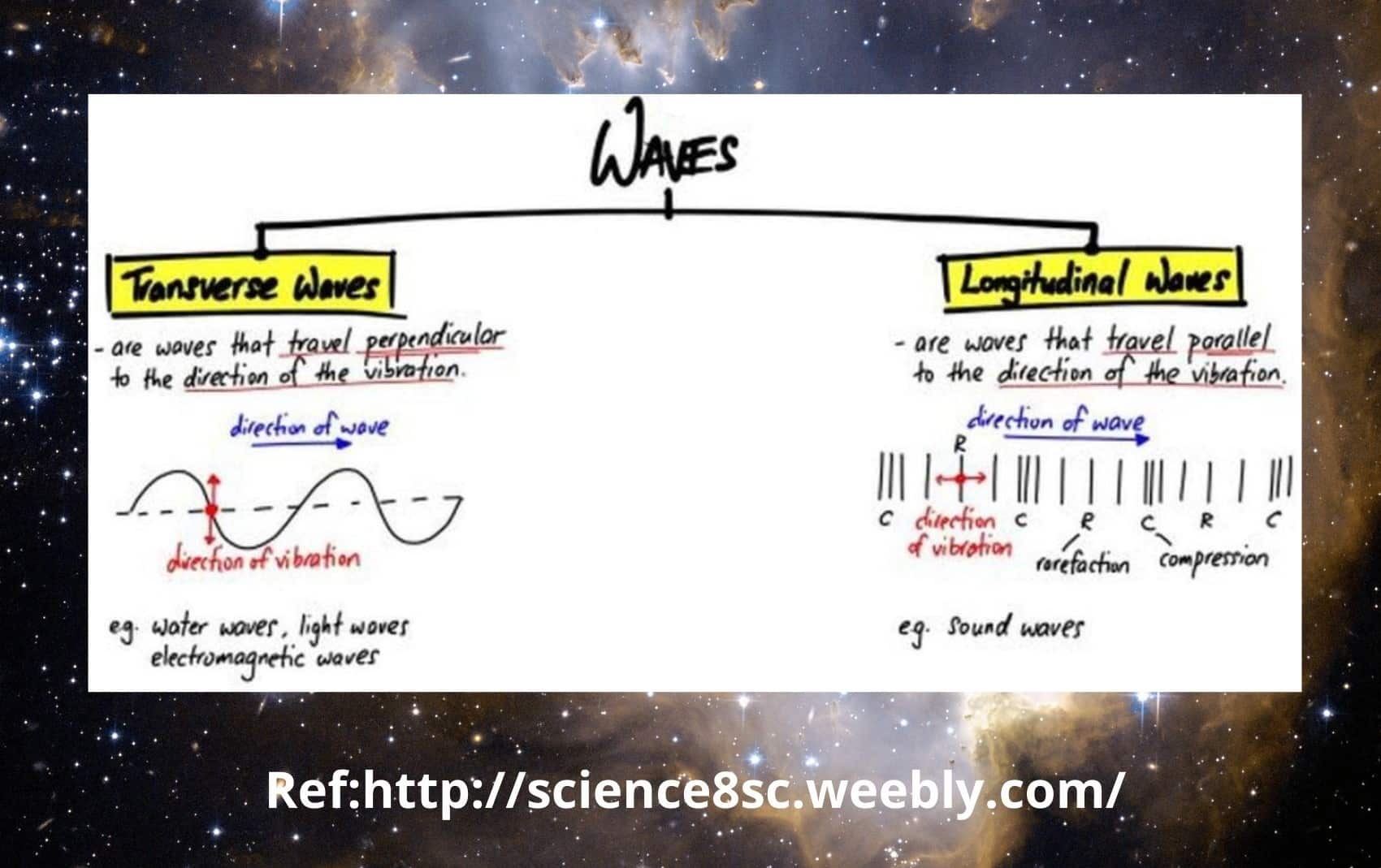Sound is something we can hear when it travels through the air or another material. It happens when something makes the air around it move, kind of like a ripple in a pond. But, we can also make sounds that are too high or too low for our ears to hear. Dogs can hear some sounds that we can’t, like the sound of a dog whistle. And, there are machines that use sound to “see” things, like a submarine that uses sonar to find other objects in the water. Some daily life examples of sound waves are listed below:
- When you listen to music through headphones, sound waves are traveling from the device to your ears.
- The noise from a car engine is produced by sound waves created by the engine’s motion.
- The sound of a dog barking or a baby crying is both caused by sound waves in the air.
- Thunder is created by the sound waves produced by lightning.
- The ringing of a telephone is the result of sound waves being produced by the phone’s speaker.
The speed of sound in a given medium is calculated using the formula:
v = fλ
where:
- v is the speed of sound;
- f is the frequency;
- λ is the wavelength.
Table of Contents
Physics Behind Sound Waves
- Sound waves are created by vibrations that travel through a medium.
- A disturbance in the medium causes a series of compressions and rarefactions to move through it in the form of a wave.
- Sound waves have properties such as frequency, wavelength, and amplitude.
- Frequency is measured in Hertz (Hz) and represents the number of waves that pass a given point in a second.
- Wavelength is measured in meters (m) and is the distance between two adjacent points in a wave that is in phase with each other.
- Amplitude is measured in decibels (dB) and is the maximum displacement of a wave from its equilibrium position.
- Sound waves can be reflected, refracted, diffracted, and absorbed as they travel through different mediums.
- Acoustics is the study of sound waves and their behaviour, with applications in engineering, music, medicine, and other fields.
Formulas Related to Sound Waves
| # | Formula | Units |
| 1 | Wave velocity (v) = frequency (f) x wavelength (λ) | m/s = Hz x m |
| 2 | Wavelength (λ) = wave velocity (v) / frequency (f) | m = m/s / Hz |
| 3 | Frequency (f) = wave velocity (v) / wavelength (λ) | Hz = m/s / m |
| 4 | Amplitude (A) = maximum displacement from equilibrium position | m or Pa (Pascals) |
| 5 | Intensity (I) = power (P) / area (A) | W/m^2 = W / (m^2) |
| 6 | Sound level (β) = 10 log(I / I0) | dB, where I0 is the threshold of hearing (W/m^2) |
| 7 | Doppler effect: f’ = f(v + v_r) / (v – v_s) | Hz, where v and v_r and v_s are in m/s |
Properties of Sound Waves
| # | Property | Description | Examples |
| 1 | Amplitude | A longer wavelength corresponds to a lower-frequency sound, such as a bass guitar. | The sound of a car horn is louder than a whisper. |
| 2 | Frequency | Distance between two consecutive points in a sound wave that is in phase. | A high-pitched sound has a higher frequency than a low-pitched sound. |
| 3 | Wavelength | The speed at which the sound wave travels through a medium depends on the properties of the medium. | A number of complete oscillations of the wave per unit of time determine the pitch of the sound. |
| 4 | Velocity | The amount of energy per unit area per unit time carried by the sound wave determines its loudness. | Sound travels faster through water than air. |
| 5 | Intensity | The bouncing of a sound wave off a surface can cause echoes and reverberation. | A jet engine produces a much more intense sound than a ticking clock. |
| 6 | Phase | The bending of a sound wave as it passes from one medium to another can affect its velocity and direction. | Two sound waves that are out of phase will cancel each other out. |
| 7 | Reflection | The relative position of a point on a sound wave compared to a reference point affects the interference and superposition. | Sound reflecting off a canyon wall creates an echo. |
| 8 | Refraction | The bending of a sound wave as it passes from one medium to another, can affect its velocity and direction. | A sound wave passing through a glass window is refracted. |
| 9 | Interference | Interaction of two or more sound waves that overlap, which can result in constructive or destructive interference. | Two identical sound waves that are in phase will interfere constructively. |
| 10 | Doppler effect | Change in frequency of a sound wave due to the relative motion of the source and observer, which can result in a change in pitch. | The sound of an approaching ambulance siren sounds higher in pitch than when it is stationary. |
How we hear sound: What happens when sound waves reach the outer ear?
- Sound waves are collected by the outer ear (pinna and ear canal).
- The eardrum vibrates in response to the sound waves.
- Vibrations are transmitted to the ossicles in the middle ear (malleus, incus, stapes).
- Ossicles amplify and transmit vibrations to the oval window in the inner ear.
- Vibrations cause fluid in the inner ear to move and stimulate hair cells in the cochlea.
- Hair cells convert mechanical vibrations to electrical signals sent to the brain via the auditory nerve.
- The brain interprets electrical signals as sound, allowing us to hear and perceive the world around us.
More Links
Damped Oscillation| Formula and Daily Life Examples
Crest of a Wave| Wave Properties| Easy Points
Transverse waves| Definition and Daily Life Examples
Compression Waves
Stationary Waves| Definition, Properties
Longitudinal Waves| Daily Life Examples
Latest posts by Umair Javaid, PhD Student (see all)
- BCl3 Lewis Structure in four simple steps - November 1, 2023
- PH3 Lewis Structure in four simple steps - October 8, 2023
- PF3 Lewis structure in four simple steps - September 24, 2023



